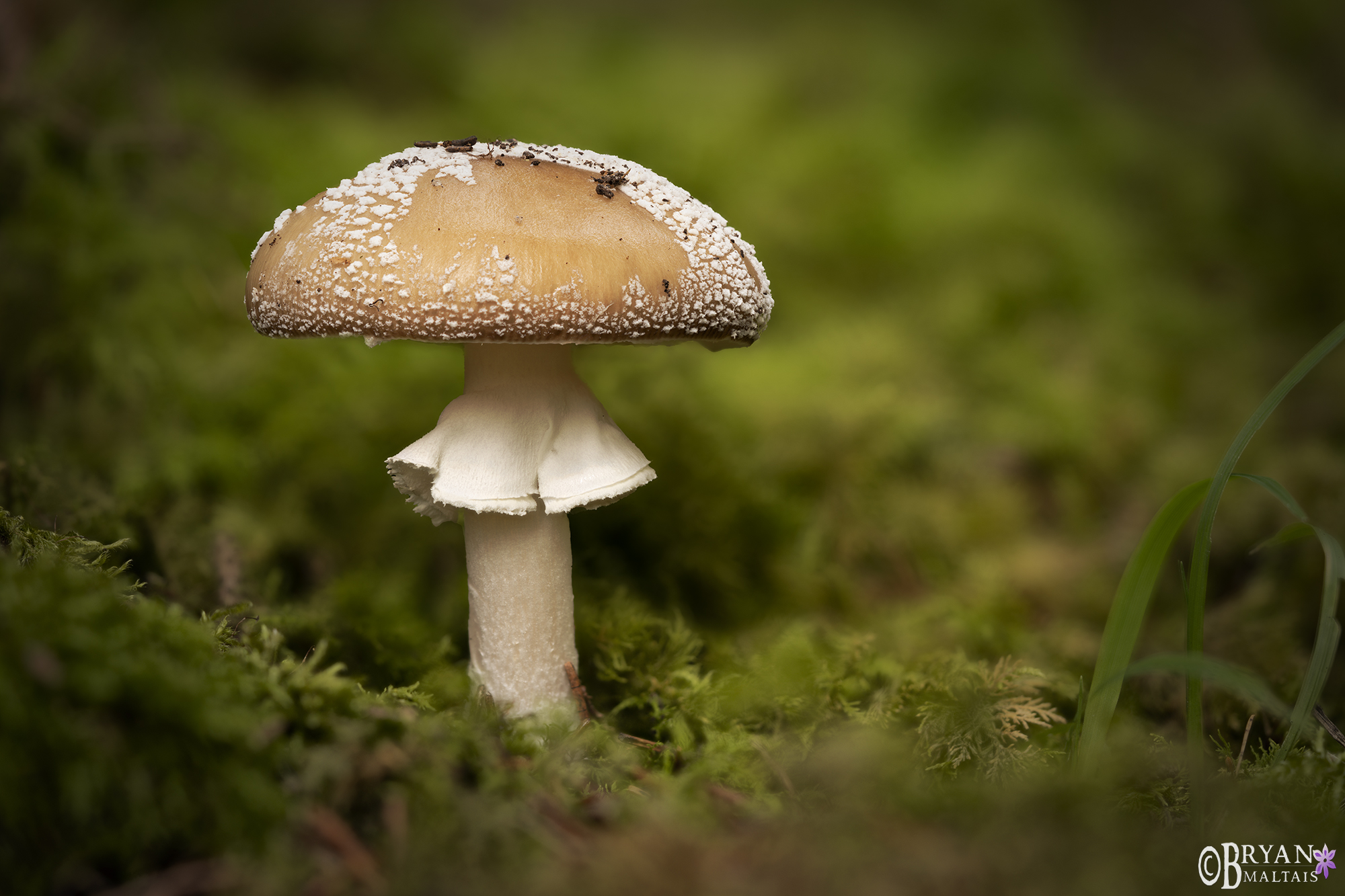
Germany Part I-The Fire Salamander
Germany Part II-The Black Forest, Vineyards and Ancient Villages
Record Mushroom Bloom
After landing in Stuttgart and getting settled in I headed straight into the forest because I was excited to see what it looked like in fall. I was immediately struck by the abundance of mushrooms. It was like a sculpture garden of porcelain figures dotting the forest. Local mushroom hunters streamed into the woods carrying baskets while carefully discerning between edible and deadly varieties. The past 5 years have brought extreme heat and drought to central Europe, stressing the forests. Despite this, abundant autumn rains saturated the forest floor, causing this anomalous mushroom emergence. The spectacle only lasted a week after I arrived, after which the mushrooms dissolved into piles of glimmering black slime.
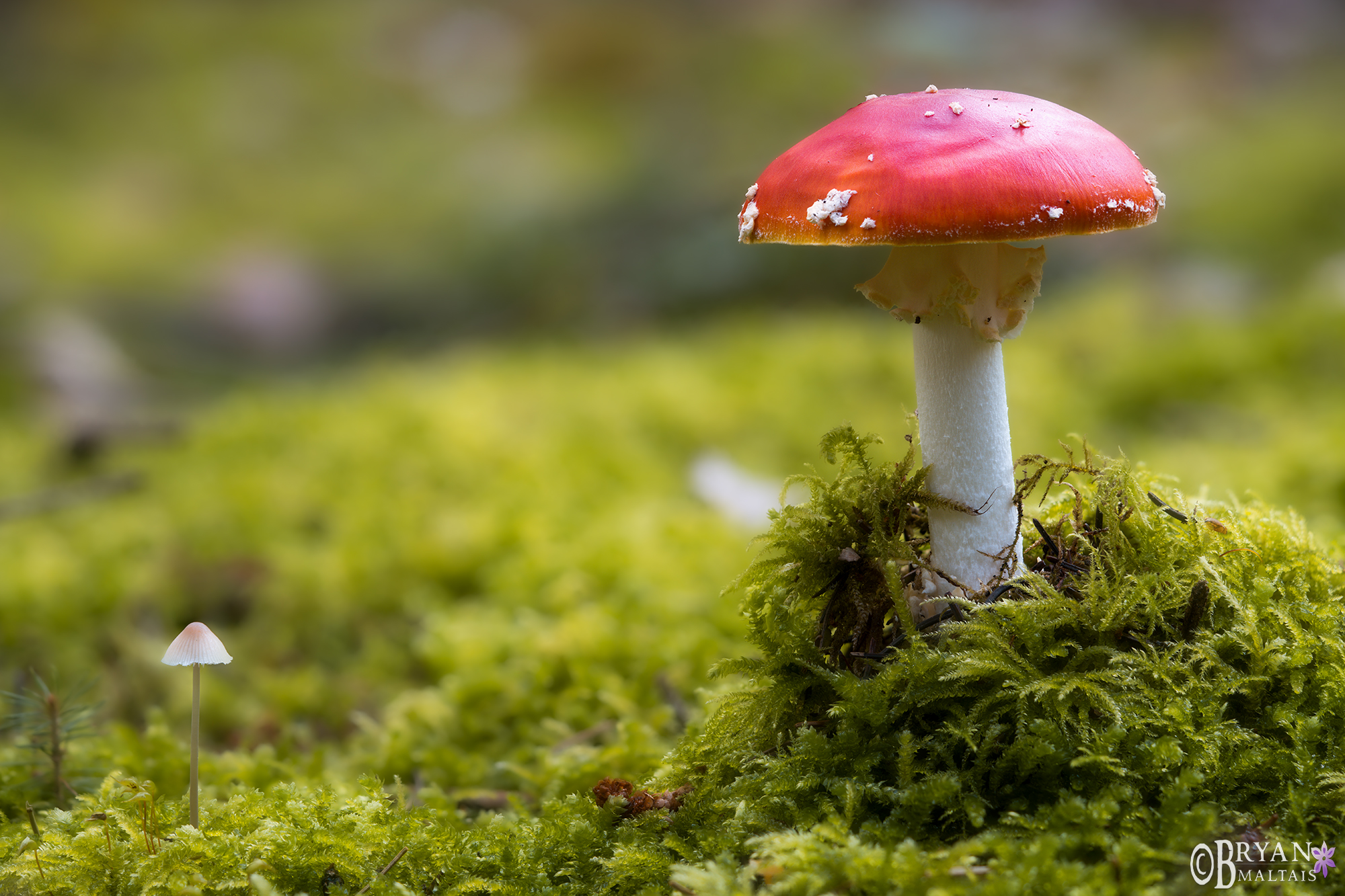 I was hoping to see just a few of the iconic Fly Agaric (Fliegenpilz), but was treated to countless specimens popping through thick moss carpets beneath spruce trees. All of the mushroom hunters that I encountered had the same joke, “You actually can eat the poisonous Fliegenpilz, but only once.” The Fly Agaric will more likely give you cramps and hallucinations than death. Some people apparently even do eat them with specific preparation.
I was hoping to see just a few of the iconic Fly Agaric (Fliegenpilz), but was treated to countless specimens popping through thick moss carpets beneath spruce trees. All of the mushroom hunters that I encountered had the same joke, “You actually can eat the poisonous Fliegenpilz, but only once.” The Fly Agaric will more likely give you cramps and hallucinations than death. Some people apparently even do eat them with specific preparation.
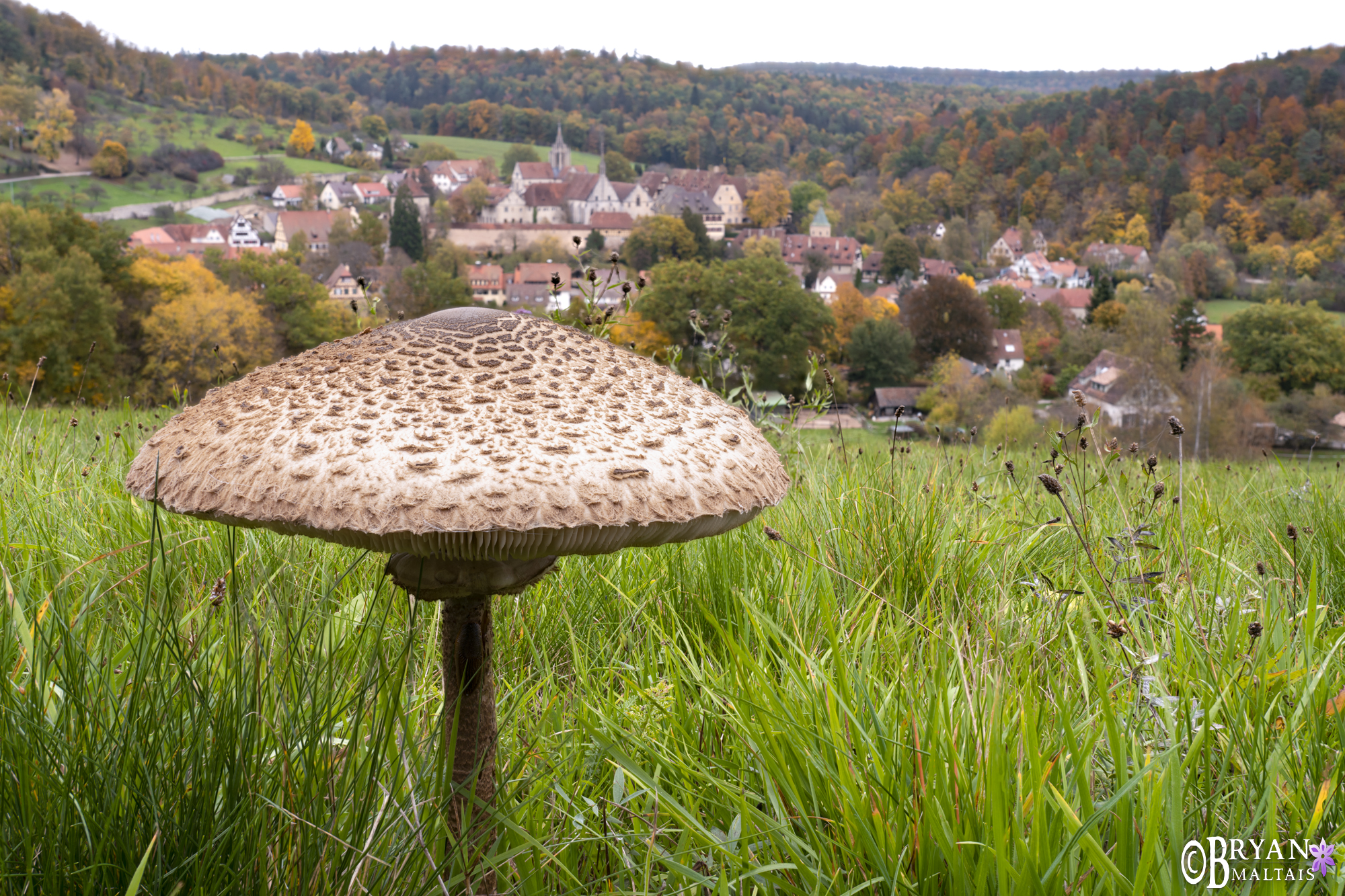 Parasol Mushrooms grew in both forest and in fields, but seemed to grow their biggest in open fields. This image is a focus stacked composite of 20 photos to capture good detail in the village. To do this, I first focused on the leading edge of the mushroom and took a photo as I focused in minute increments forward until the village was in focus. Simply shooting at f/22 would have achieved similar depth of field without the labor, but diffraction would have degraded image quality. I used Zerene Stacker to merge all of the photos. I left the village slightly out of focus to maintain separation between the mushroom and background.
Parasol Mushrooms grew in both forest and in fields, but seemed to grow their biggest in open fields. This image is a focus stacked composite of 20 photos to capture good detail in the village. To do this, I first focused on the leading edge of the mushroom and took a photo as I focused in minute increments forward until the village was in focus. Simply shooting at f/22 would have achieved similar depth of field without the labor, but diffraction would have degraded image quality. I used Zerene Stacker to merge all of the photos. I left the village slightly out of focus to maintain separation between the mushroom and background.
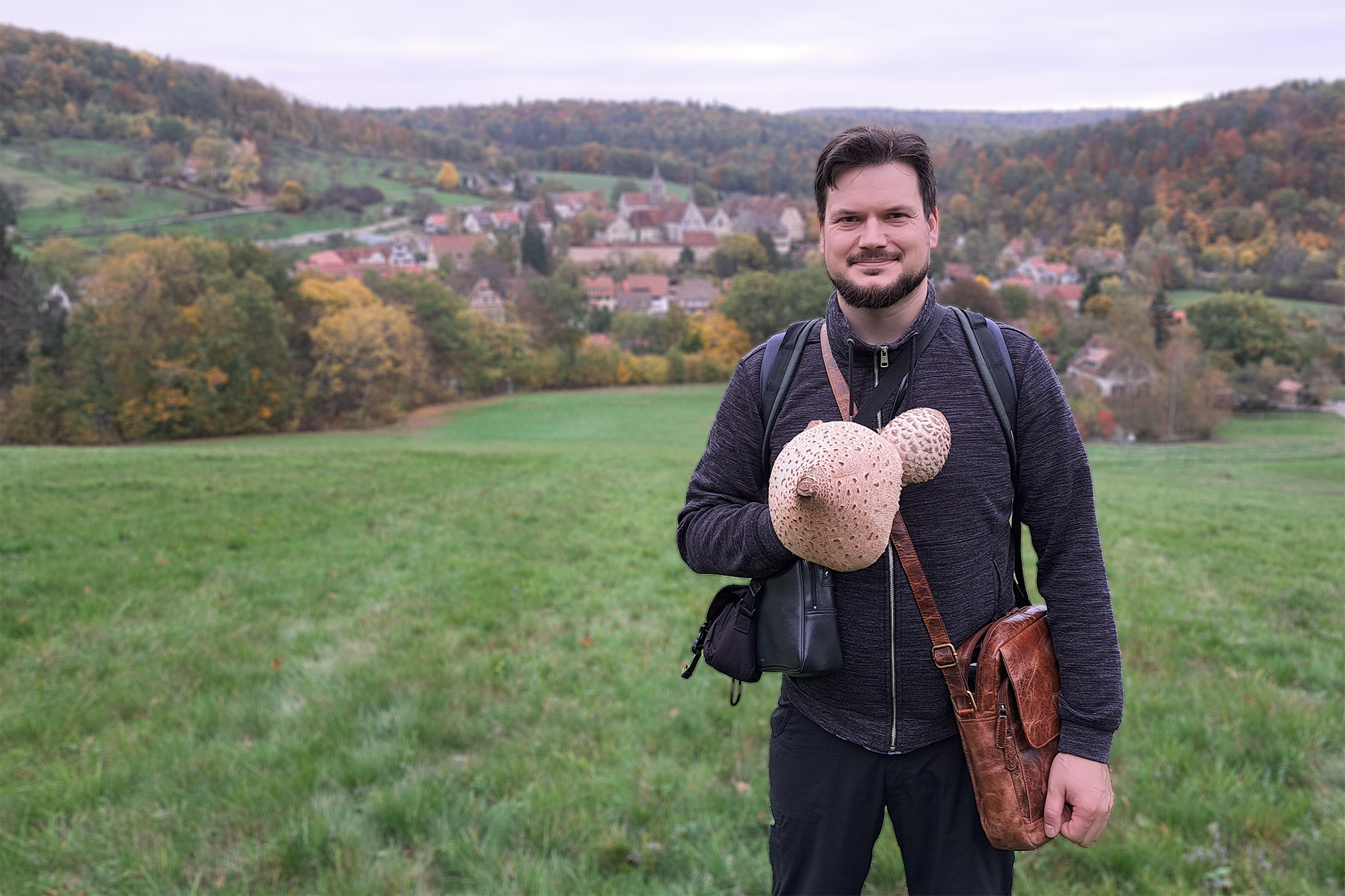 My friend Markus collected a bounty of Parasols to make them into mushroom schnitzel.
My friend Markus collected a bounty of Parasols to make them into mushroom schnitzel.
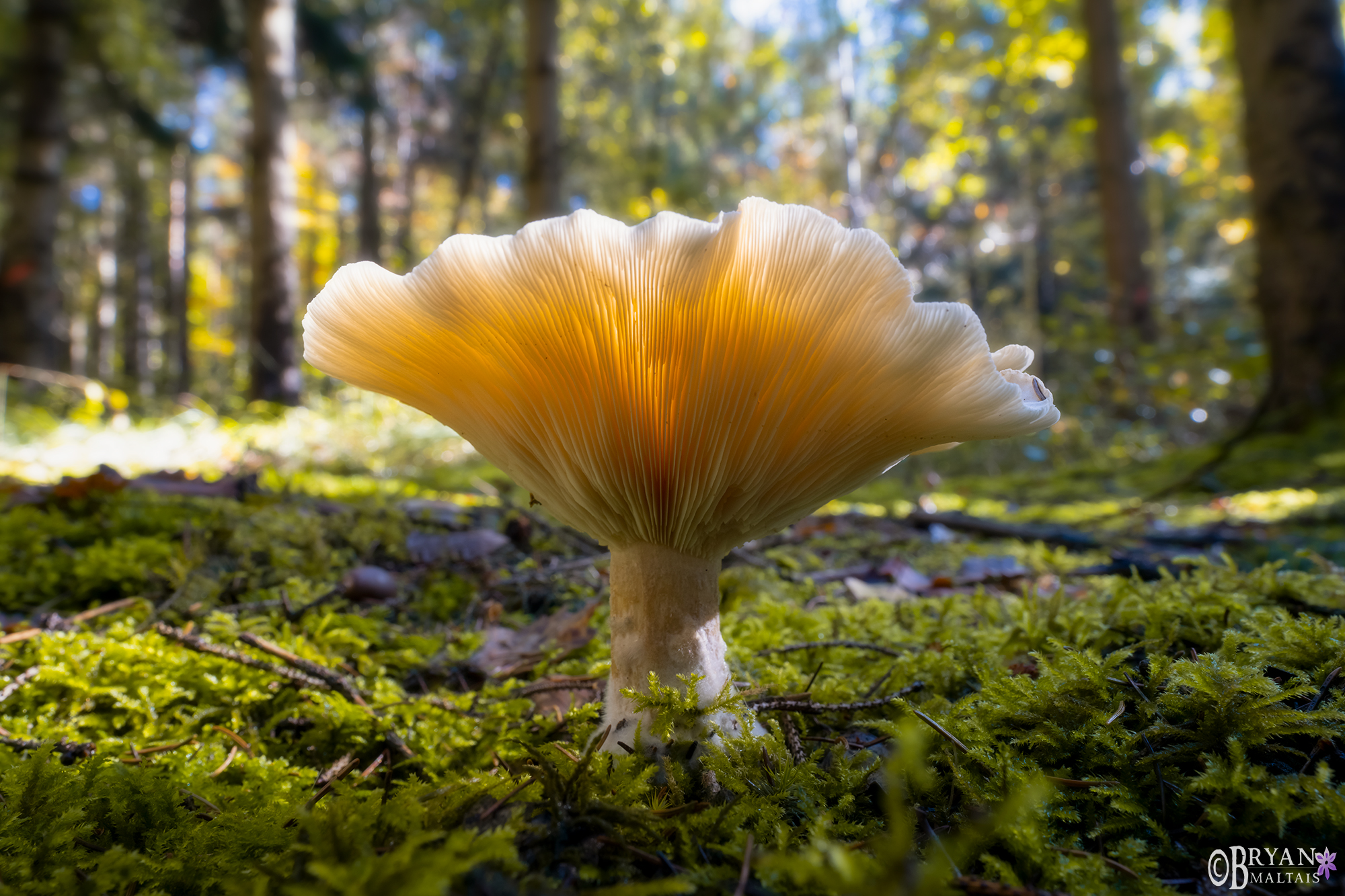 This specimen of a Feldtrichterling/Common Funnel begged to be portraitized stretched out capturing the sunlight like stained glass. A perspective from beneath was necessary to accentuate its flowing cap and undulating gills. It looked like a little dress being blown up by wild wind. A tripod wouldn’t have let me get low enough so I set my camera directly on the ground and fine-tuned its position with twigs.
This specimen of a Feldtrichterling/Common Funnel begged to be portraitized stretched out capturing the sunlight like stained glass. A perspective from beneath was necessary to accentuate its flowing cap and undulating gills. It looked like a little dress being blown up by wild wind. A tripod wouldn’t have let me get low enough so I set my camera directly on the ground and fine-tuned its position with twigs. 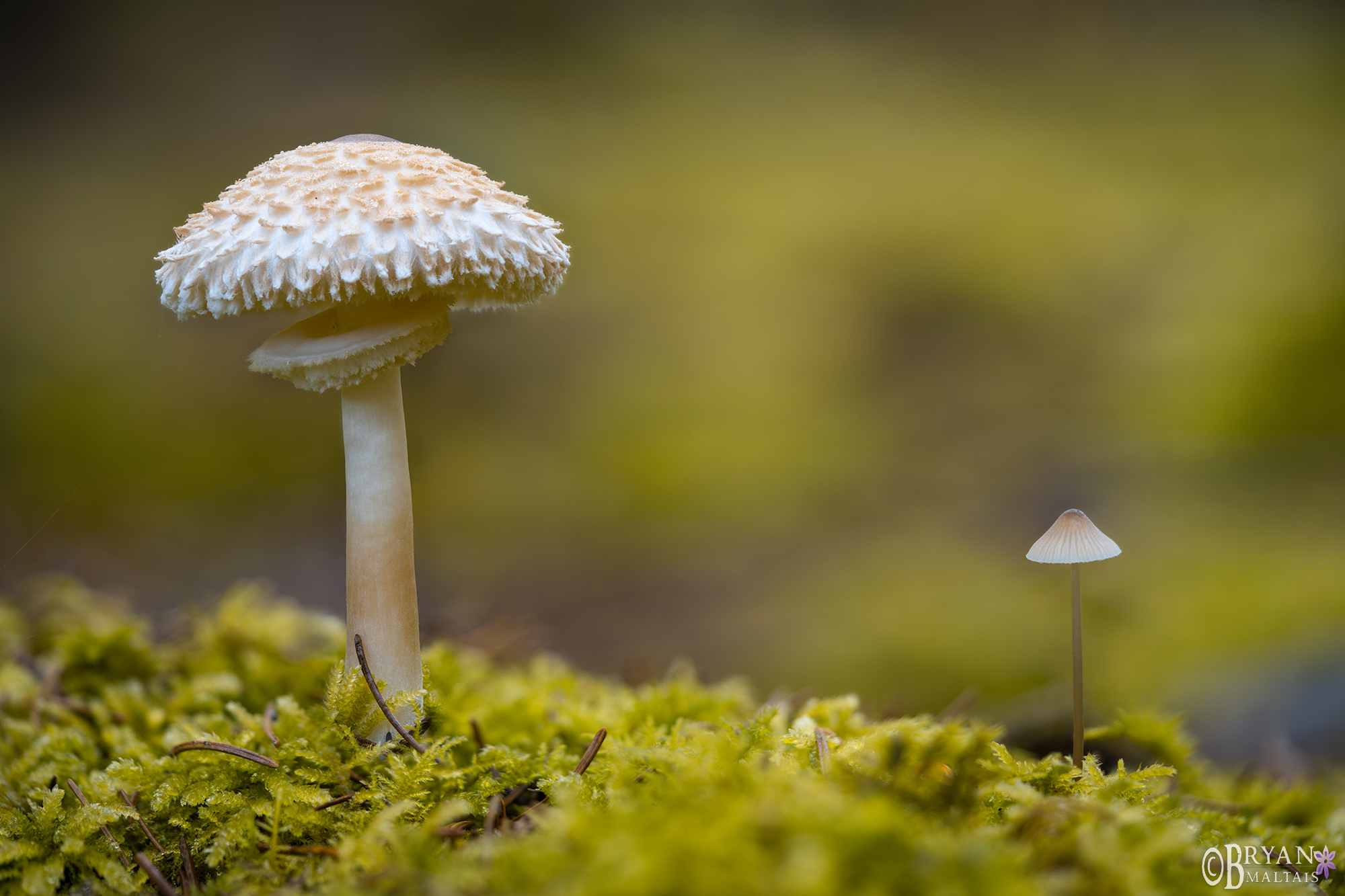 Egerlingsschirmlinge/Virgin Cap. Here I used focus stacking to achieve deep focus in the mushroom while keeping the background blurred. In this case I stacked 20 images of the mushroom taken at f/4, which kept the background defocused.
Egerlingsschirmlinge/Virgin Cap. Here I used focus stacking to achieve deep focus in the mushroom while keeping the background blurred. In this case I stacked 20 images of the mushroom taken at f/4, which kept the background defocused. 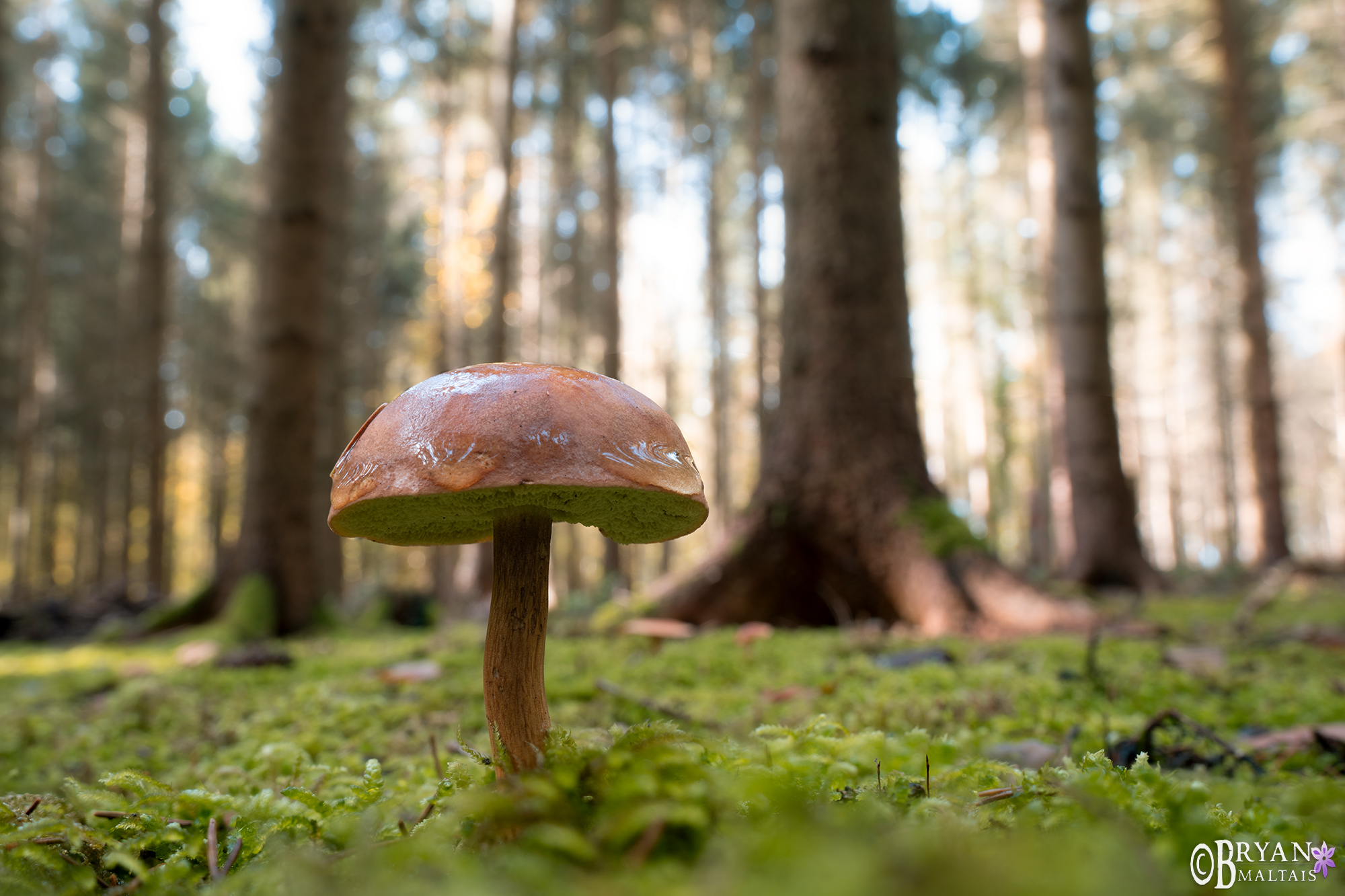 A Maronen-Röhrling/Bay Bolete humbly hanging out in his forest of neatly planted Spruce trees. Though forests are plentiful in Germany, most are cultivated to some extent for timber production. Much of the native broadleaf forest has been replaced with Spruce because they’re fast growing and profitable. Despite this, I found the greatest variety of mushrooms in the moss-carpeted, acidic soils of Spruce stands. Modern forestry practices are shifting the forest back to a natural Mischwald/mixed forests of Beech, Oak, Spruce and Pine.
A Maronen-Röhrling/Bay Bolete humbly hanging out in his forest of neatly planted Spruce trees. Though forests are plentiful in Germany, most are cultivated to some extent for timber production. Much of the native broadleaf forest has been replaced with Spruce because they’re fast growing and profitable. Despite this, I found the greatest variety of mushrooms in the moss-carpeted, acidic soils of Spruce stands. Modern forestry practices are shifting the forest back to a natural Mischwald/mixed forests of Beech, Oak, Spruce and Pine.
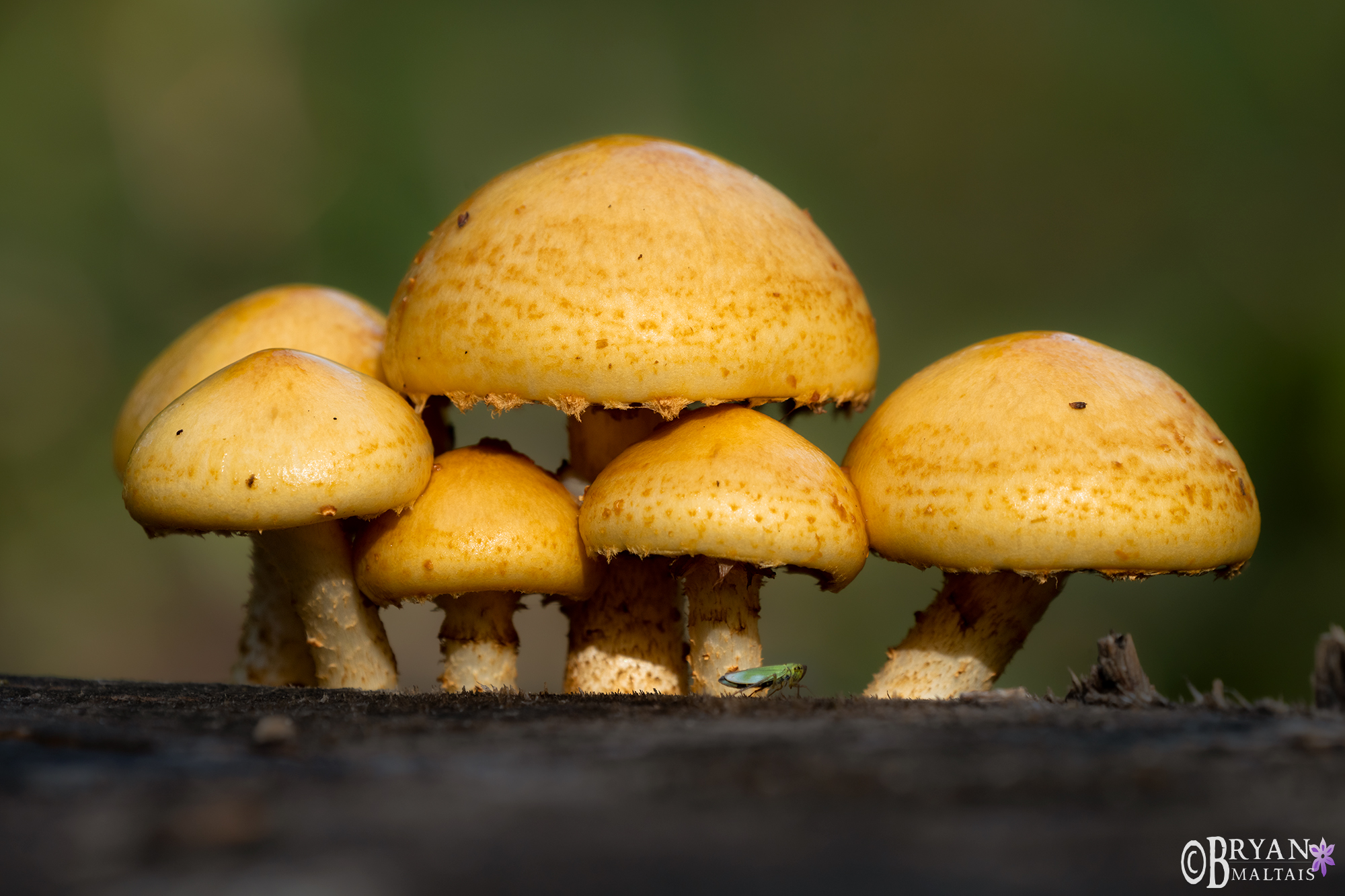 Tiny Leafhopper, big mushrooms. Though I’m interested in all aspects of nature, I didn’t realize how fun doing macro photography of mushrooms would be. Getting to spread out my gear on the forest floor and methodically setting up each shot with no worry that my subject would leave was total bliss.
Tiny Leafhopper, big mushrooms. Though I’m interested in all aspects of nature, I didn’t realize how fun doing macro photography of mushrooms would be. Getting to spread out my gear on the forest floor and methodically setting up each shot with no worry that my subject would leave was total bliss.
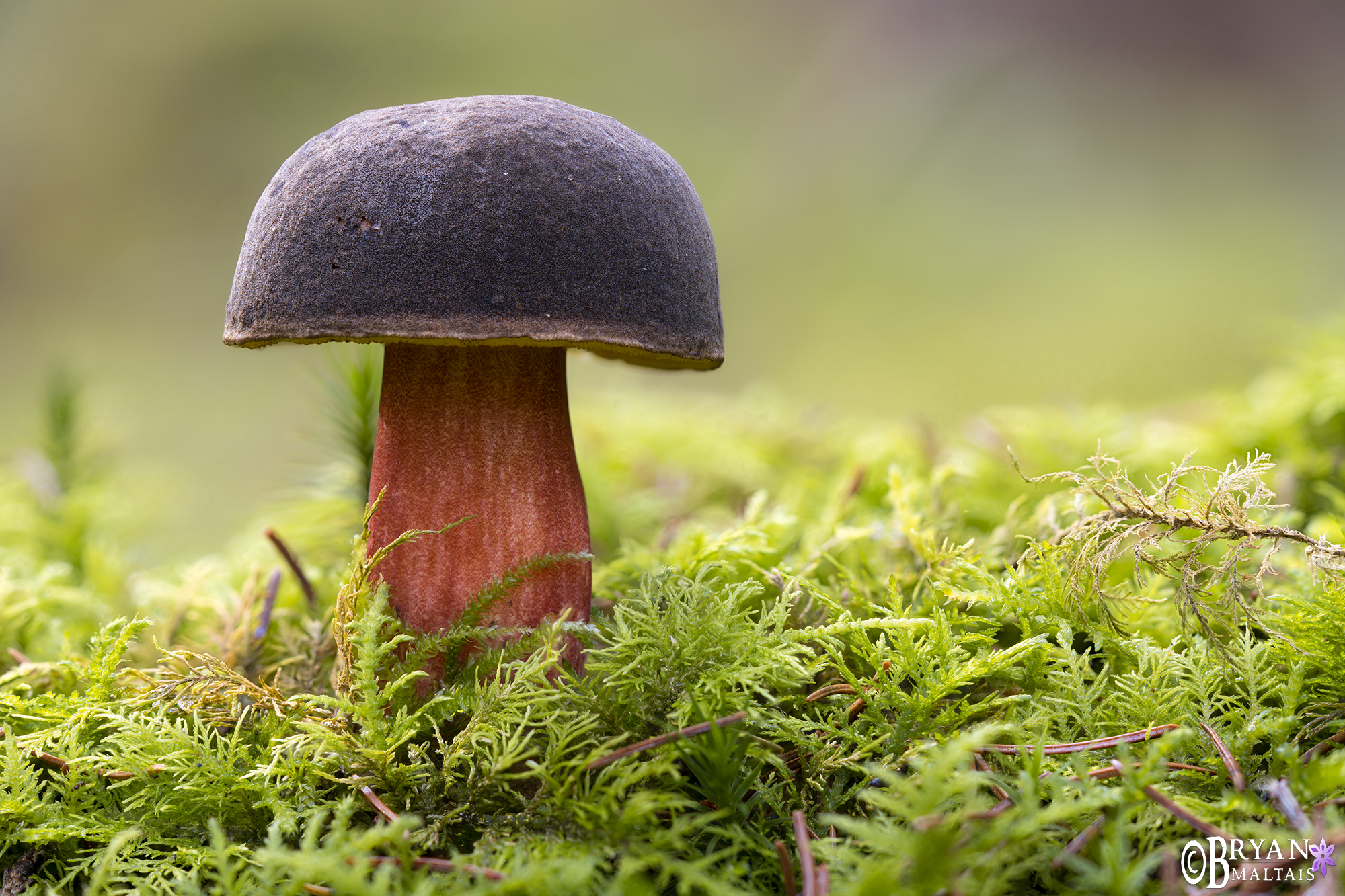 Some type of Röhrling/Bolete. If you can ID any of the mushrooms that I haven’t, please leave in the comments.
Some type of Röhrling/Bolete. If you can ID any of the mushrooms that I haven’t, please leave in the comments.
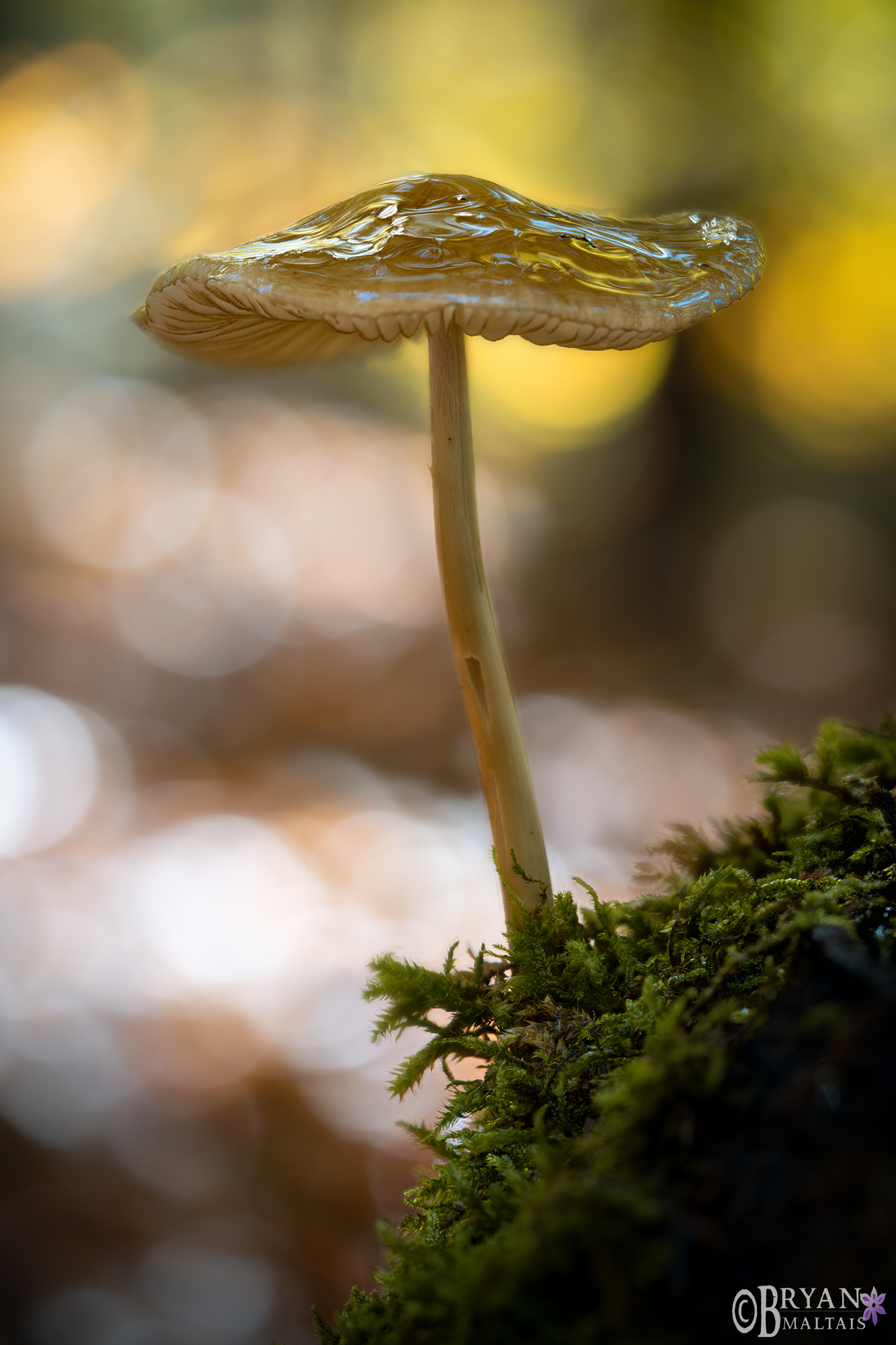 What looks like water on this mushroom’s cap is a coat of slime.
What looks like water on this mushroom’s cap is a coat of slime.
 The Pantherpilz/Panther Cap looks essentially like a tan Fly Agaric. Both are in the same genus (Amanita) and toxic.
The Pantherpilz/Panther Cap looks essentially like a tan Fly Agaric. Both are in the same genus (Amanita) and toxic.
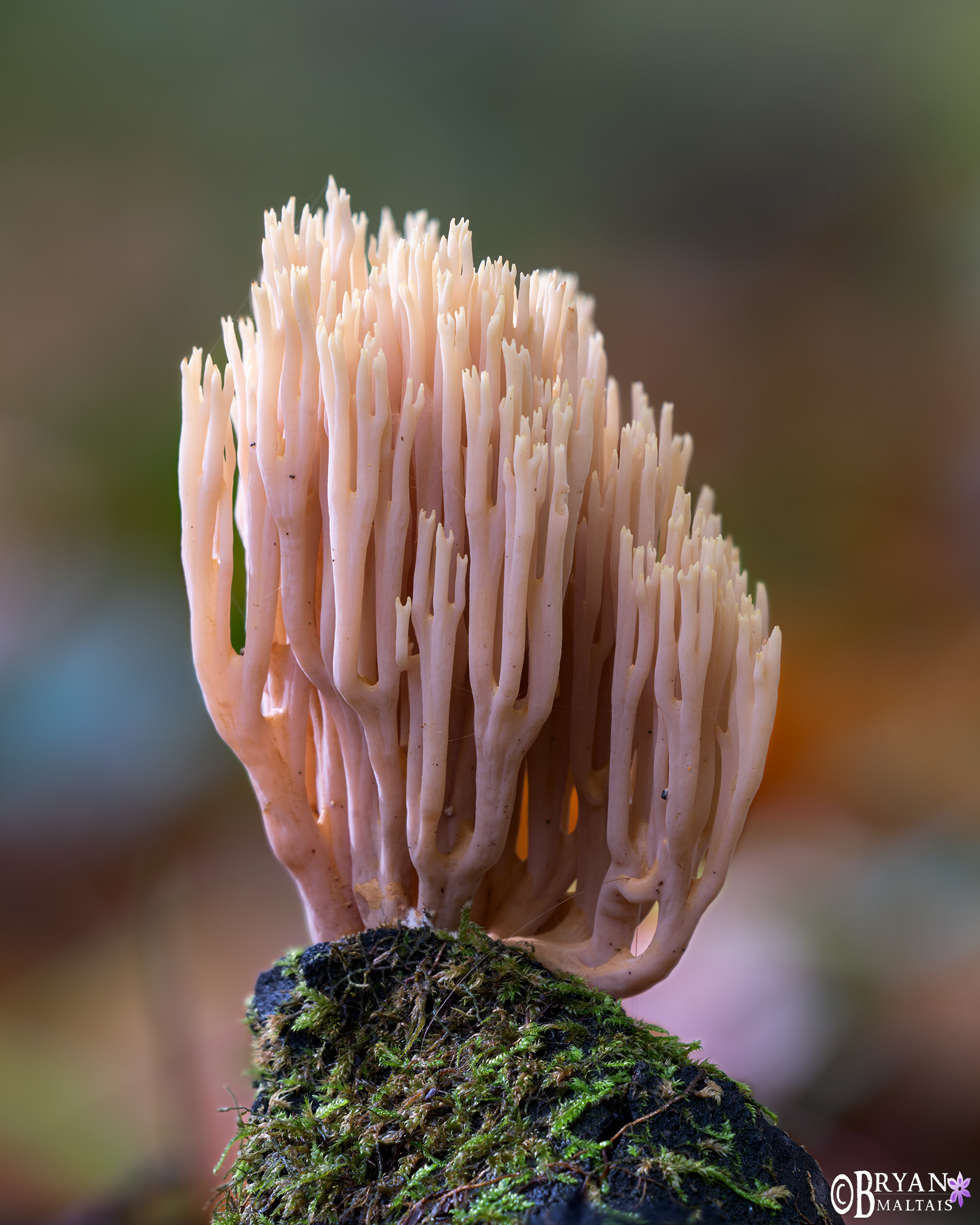 Coral Fungi look like intricately sculpted ornaments that sprout out of soggy wood.
Coral Fungi look like intricately sculpted ornaments that sprout out of soggy wood.
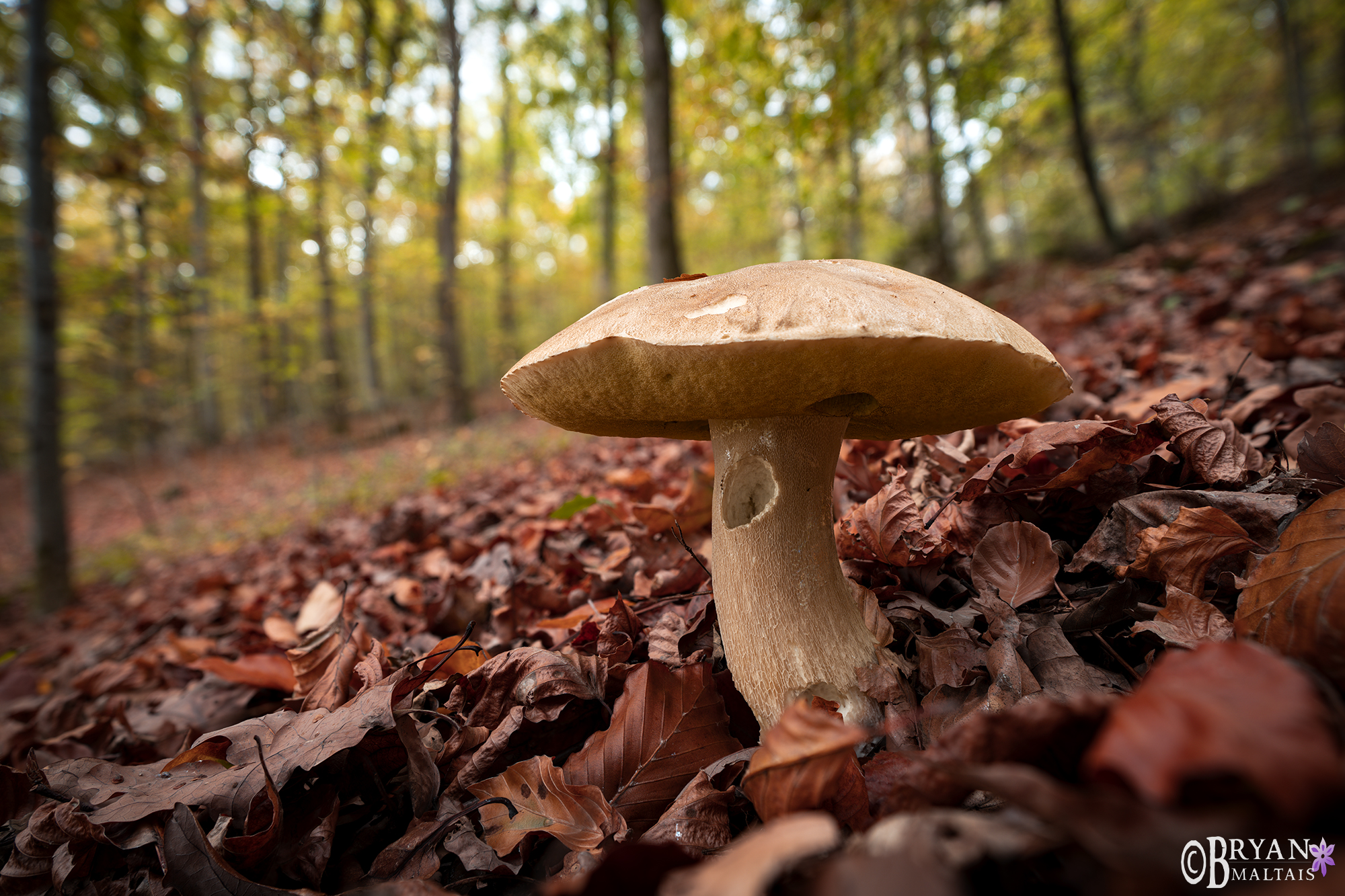 This Porcini has a few missing bites from a slug. You’d probably have a few missing bites too if you staked yourself in the forest for a few days. This is another focus stack to keep the mushroom sharp and the background smooth.
This Porcini has a few missing bites from a slug. You’d probably have a few missing bites too if you staked yourself in the forest for a few days. This is another focus stack to keep the mushroom sharp and the background smooth.
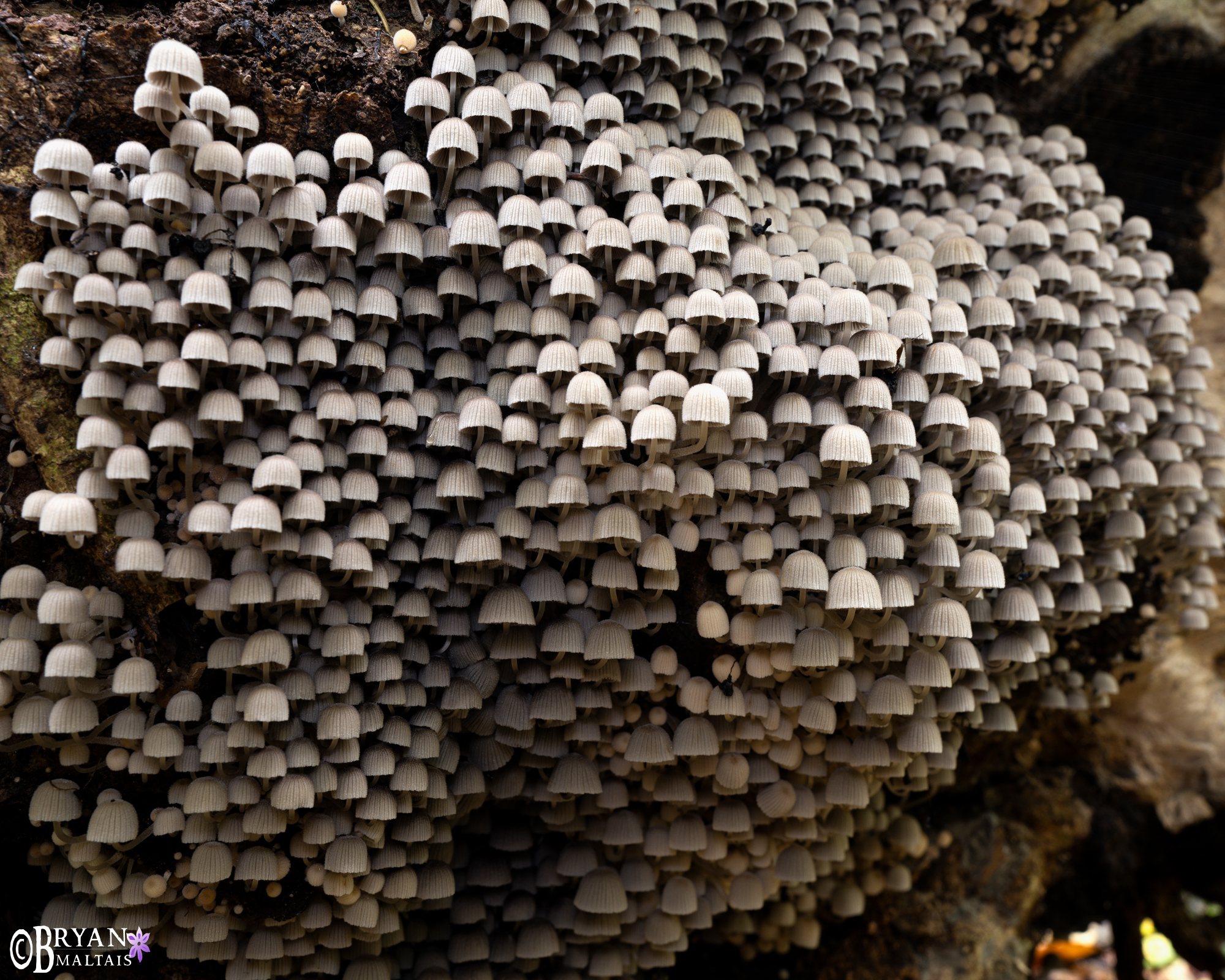 It was quite a spectacle seeing these Tintling/Trooping Crumble Cap engulfing a tree stump.
It was quite a spectacle seeing these Tintling/Trooping Crumble Cap engulfing a tree stump.
Continue reading…
